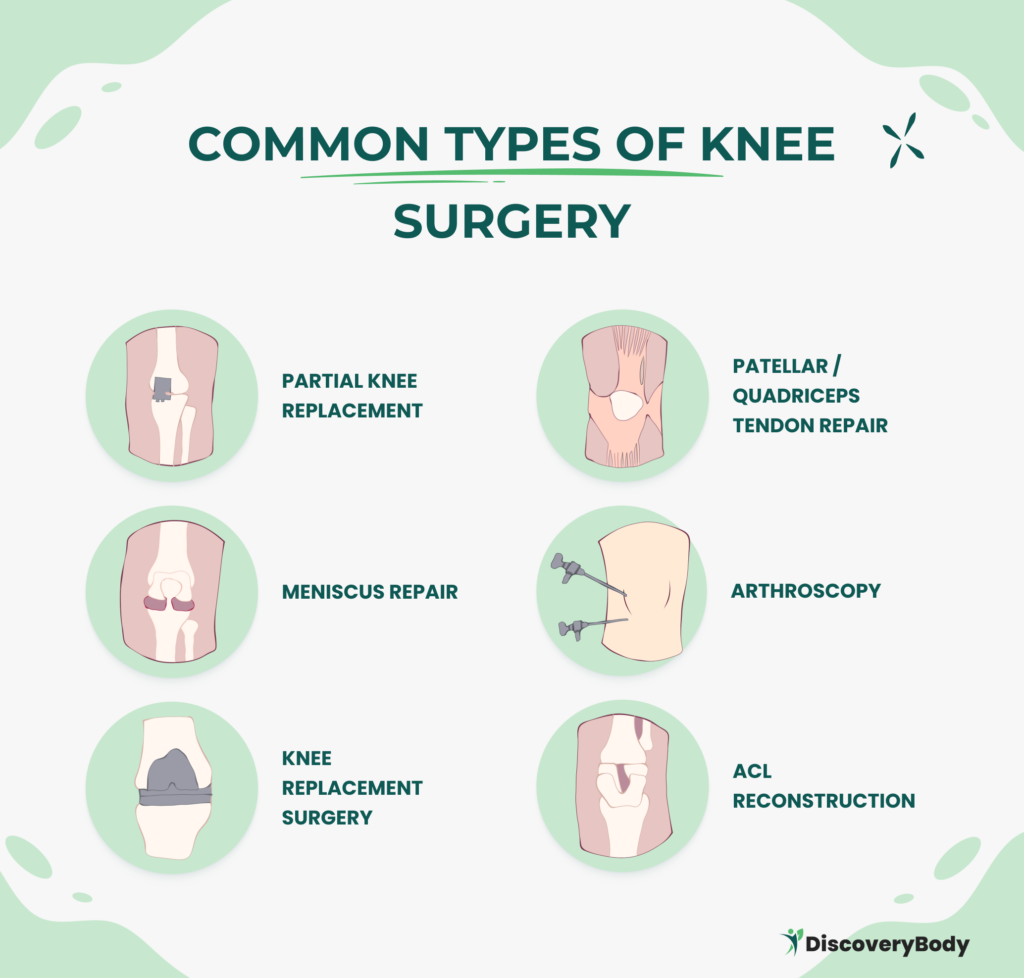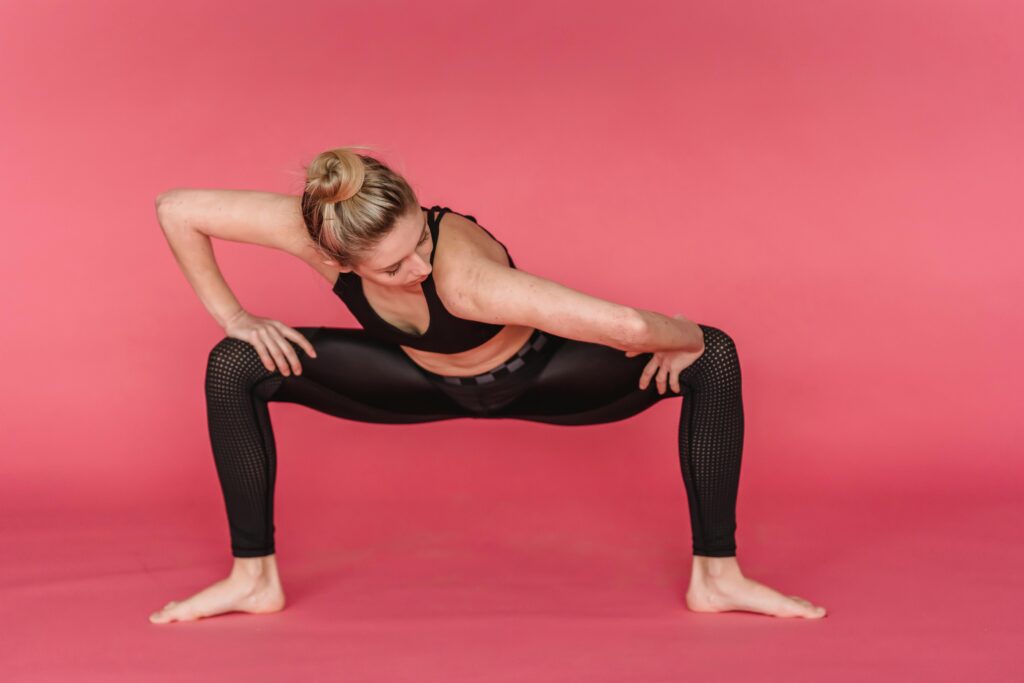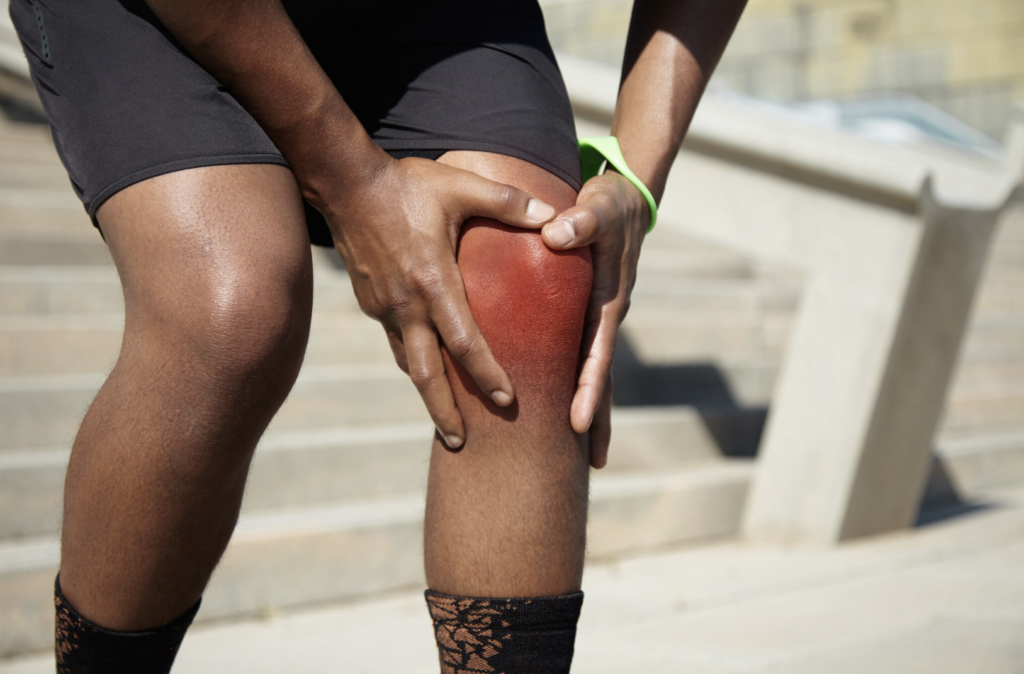Medically Accredited
Why Do Your Knees Hurt When Bent? The Causes and Treatment of a Painful Knee When Bending
Knee pain is something that a lot of people complain about, especially when bending the knee. This discomfort can range from a mild ache to sharp, intense pain, depending on the underlying cause. In this guide, we will explore the various causes of a painful knee when bending and discuss home remedies or other treatment options to alleviate the discomfort.
Why Do Your Knees Hurt When Bent?
Your knees are exposed to frequent bending movements throughout the day, playing an important role in activities such as climbing stairs, sitting, and exercising. With numerous ligaments, tendons, muscles, and bones in the knee area, any issue within these structures can lead to discomfort and pain when bending.
There are several potential causes of a painful knee when bending, ranging from minor issues to more serious conditions. Some of the causes include the following:

Patellofemoral Syndrome
Patellofemoral syndrome (runner’s knee) is a condition that causes a dull ache in the front of the knee. It’s often associated with activities that involve bending the knee, such as running, climbing stairs or squatting.
Patellar Tendonitis
Patellar tendonitis (jumper’s knee) is characterized by burning and pain in or at the base of the kneecap. It’s commonly seen in people who participate in activities that involve repetitive jumping or running.
Iliotibial (IT) Band Syndrome
IT band syndrome can cause burning pain on the outside of the knee, which may spread to the hip or thigh. This condition often occurs in people who engage in activities like running or cycling.
Hamstring Tendonitis
Hamstring tendonitis leads to pain behind the knee and thigh. It’s usually seen in people who participate in activities that require frequent bending of the knee, such as running or jumping.
Quadriceps Tendonitis
Quadriceps tendonitis causes pain above or in front of the knee. This condition is commonly seen in individuals who participate in activities that involve frequent jumping or squatting.
Knee Bursitis
Knee bursitis can cause swelling, warmth, and pain over or below the knee. This condition often occurs due to repetitive kneeling or direct trauma to the knee.
Osteoarthritis
Osteoarthritis is a degenerative joint disease that causes knee pain, swelling, and stiffness, particularly in the morning. According to the World Health Organization (WHO), the knee is the most frequently affected joint by the condition, with a prevalence of 365 million, out of about 528 million people worldwide who are suffering from osteoarthritis. It’s more common in older individuals or those with a history of knee injuries.
Injury or Trauma to the Knee Joint or Ligaments
Injuries or trauma to the knee joint or ligaments can cause sharp pain, swelling, and difficulty moving the knee. These injuries may occur during sports, accidents, or falls.
Baker’s Cyst
Baker’s cyst can cause tightness and swelling behind the knee. It’s often associated with underlying knee conditions such as arthritis or meniscus tears.
What Are the Home Remedies for A Painful Knee When Bending?
If your knee pain is mild and not caused by a severe underlying condition, you may consider trying some home remedies to alleviate the discomfort. Here are a few home remedies to consider:

Go For Low-Impact Activities
Pay attention to how your knees feel during different activities. If a particular movement worsens your knee pain, avoid it until you feel better. Go for low-impact activities that put less stress on your joints, such as biking, swimming, water aerobics, or walking.
RICE Method
The RICE method is a common treatment for minor muscle injuries, including those involving the knee. RICE stands for:
- Rest: Avoid placing weight on your knee to allow the surrounding muscles to heal.
- Ice: Apply ice wrapped in a cloth or plastic bag to the affected area for 20 minutes at a time, multiple times a day, to reduce swelling and pain.
- Compression: Use an elastic bandage to wrap your knee, providing support and reducing swelling. Ensure that the bandage is snug but not too tight.
- Elevation: Elevate your knee above the level of your heart whenever possible to reduce swelling.
Heat Therapy
If you have arthritis or stiffness in your knee, applying heat may offer relief. Heat increases circulation and can help relax the muscles surrounding the knee. You can use a heating pad, a warm towel, or take a warm bath or shower to apply heat to the affected area.
Over-the-Counter Medication
To reduce pain and swelling, you may consider taking over-the-counter nonsteroidal anti-inflammatory drugs (NSAIDs) such as ibuprofen (Advil) or naproxen (Aleve). Always follow the recommended dosage and frequency, unless otherwise instructed by your healthcare provider.
Massage Therapy
Massage therapy can be beneficial for managing a painful knee when bending. A skilled massage therapist can apply pressure to the muscles, tendons, and ligaments surrounding the knee, helping to alleviate pain and improve circulation. Different types of massages, such as Swedish massage, trigger point massage, or deep tissue massage, may be effective in addressing knee discomfort.
Knee Exercises
Engaging in knee exercises can help manage knee pain by strengthening the muscles that support the knee and improving flexibility. It’s important to perform these exercises correctly and at an appropriate intensity. If any exercise causes increased pain, it should be stopped immediately.
What are the Medical Treatments for a Painful Knee When Bending?
In some cases, where home remedies may not provide the relief that’s needed, medical treatment may be necessary. The right treatment will depend on the underlying cause of the knee pain. Here are a few medical treatments that your healthcare provider may recommend:
Physical Therapy
Physical therapy can be an effective treatment for knee conditions and injuries. A physical therapist can provide specific exercises tailored to your condition, aiming to improve strength, mobility, and flexibility in your knee. Physical therapy can also help with pain management and rehabilitation.
Orthotics
Orthotics, such as shoe inserts, can help stabilize the ankle and foot, reducing pressure on the knee. Depending on your condition, you may be able to purchase over-the-counter orthotics or be prescribed custom-made inserts by your healthcare provider.
Immobilization
If the knee pain is the result of an injury, your healthcare provider may recommend immobilization using a brace or cast. This restricts movement and provides support for the knee, aiding in pain relief and facilitating the healing process.
Surgery
In severe cases that do not respond to nonsurgical treatments, surgery may be necessary. The type of surgery will depend on the specific knee condition or injury. Some of the knee surgeries available for treatment include the following:

- Arthroscopy: Your healthcare provider makes a small incision in your knee and then inserts a long, thin instrument with a camera in it. This is used to treat knee injuries or structural problems through a tiny incision.
- Patellar or Quadriceps Tendon Repair: This surgery repairs a torn tendon. In this procedure, small holes are drilled in the kneecap, and sutures are threaded through them to pull the tendon back to the bone.
- Anterior Cruciate Ligament (ACL) Reconstruction: This surgery repairs a torn ACL. A graft, or piece of tissue, is usually inserted into the knee during this procedure through a tiny incision that is made during minimally invasive surgery.
- Meniscectomy or Meniscus Repair: This is a procedure performed to treat tears in the meniscus. During the surgery, the torn edges of the meniscus are trimmed, and the remaining tissue is stitched back together using special sutures.
- Total Knee Replacement: This surgery replaces the entire knee joint. The damaged cartilage and bone in the knee joint are removed and replaced with metal and plastic implants.
- Tibial Tubercle Transfer: This is a surgical procedure used to realign the patellar (kneecap) tendon in cases of patellar instability or chronic dislocation. This procedure improves knee stability.
When to Seek Medical Help for a Painful Knee When Bending?
Mild knee pain when bending is usually not a cause for concern and can be managed with home remedies. However, certain signs and symptoms need medical attention. You should consult your healthcare provider if you experience the following:
- Severe knee pain
- Chronic knee pain
- Inability to bend or straighten your knee
- Limping
- Swelling or redness in your knee
- Knee weakness
- Popping or crunching noises accompanied by pain
- Fever
Additionally, it’s important to seek medical attention right away if you recently suffered a knee injury along with a popping noise, swelling, or the inability to bear weight on your leg.
How to Diagnose the Causes of a Painful Knee When Bending?
To determine the cause of your knee pain, your healthcare provider will conduct a thorough evaluation. This may involve the following tests:
- Physical examination: The healthcare provider will examine your knee for signs of joint swelling, instability, and other indicators of potential issues.
- Imaging tests: X-rays or MRI scans may be ordered to assess the bones and tissues in your knee.
- Blood tests: Blood tests can help identify signs of systemic inflammatory disorders, such as rheumatoid arthritis (RA), or signs of infection.
How Long Does it Take to Recover from Knee Pain?
The recovery time for knee pain depends on various factors, including the severity of the knee condition or injury, the type of treatment required, your overall health, and your adherence to the treatment plan. Generally, it takes about 6 weeks to recover from a knee injury. However, if surgery is done, recovery time can range from 8 weeks to 12 months.
During the recovery process, physical therapy plays a crucial role in restoring strength and function to the knee. It’s usually common to continue physical therapy even after the initial recovery period to ensure optimal healing and prevent future knee issues.
How Do I Prevent Knee Pain When Bending?
Taking steps to keep your knees healthy can help prevent knee pain when bending and reduce your risk of injuries. Here are some tips to prevent knee pain.

- Manage Your Weight: Maintaining a healthy weight can alleviate stress on your knees, reducing the risk of pain and injury.
- Improve Flexibility: Engaging in activities that improve flexibility, such as stretching or yoga, can help loosen tight muscles and make you less prone to injuries when doing sports or other activities that involve knee bending.
- Condition Your Body: If you participate in sports or activities that involve physical exertion, it is important to stay in good physical shape. Regular exercise and conditioning can strengthen the muscles around your knees, providing them with better support and stability.
- Listen to Your Body: Pay attention to signs of fatigue during activities. Fatigued muscles may fail to protect ligaments effectively, increasing the risk of injury. Take breaks when needed and avoid pushing yourself beyond your limits.
- Avoid Overuse: Repetitive stress on the knees can lead to pain and injury. If you engage in activities with repetitive knee movements, take steps to minimize strain and give your knees adequate rest.
- Wear Appropriate Footwear: Wearing proper footwear that provides enough support and cushioning can help reduce stress on your knees during physical activities.
- Warm-up and Cool-down: Prior to engaging in physical activities, incorporate warm-up exercises to prepare your body for strain. Afterward, cool-down exercises can help prevent stiffness and reduce the risk of post-activity pain.
In addition to the tips mentioned above, it’s important to understand that knee pain can also be influenced by factors such as genetics, age, and certain medical conditions. So, it’s important to consult with your healthcare provider for an accurate diagnosis and treatment plan.
Frequently Asked Questions
My knees hurt when bent. I did nothing that could trigger the pain; could it be osteoarthritis?
Osteoarthritis is a common cause of knee pain. This condition occurs due to the natural “wear and tear” on the joints over time as we grow older. Unlike other types of arthritis, such as rheumatoid arthritis, osteoarthritis is more common and often characterized by a dull, aching pain in the knee. However, whether you have osteoarthritis or not, nothing is conclusive yet. It’s highly recommended for you to consult your healthcare provider to get an accurate diagnosis.
What kind of injuries can cause knee pain?
Having a painful knee when bending can also stem from various injuries, particularly those involving twisting motions. Common knee injuries include ACL (anterior cruciate ligament) tears, meniscus tears, and ligament injuries. These injuries usually occur during activities that put excessive stress on the knee joint, such as sports or sudden movements.
What’s the difference between arthritis and typical knee pain?
One key distinction between arthritis pain and typical knee pain is that arthritis is not caused by trauma. For example, if you have experienced an anterior cruciate ligament (ACL) tear or a meniscus injury, you can usually pinpoint the exact moment it happened. In contrast, arthritis pain tends to suddenly develop and get worse over time, often presenting as a constant, dull ache.
Will my knee pain go away on its own?
The recovery of knee pain depends on its underlying cause. Arthritis pain can change over time, going from getting better to getting worse. The pain might not go away completely, but some days might be a lot better than others. On the other hand, knee pain resulting from an injury often gradually improves, especially if there’s treatment involved. However, if you continue to experience discomfort and limitations in your daily activities, it’s important to seek medical attention right away.
Be Proactive When It Comes to Knee Pain
Having a painful knee when bending can be frustrating, and it could potentially limit your mobility. Yes, there are home remedies you can use to alleviate your discomfort but remember to talk to your healthcare provider if your knee pain persists or gets worse. Taking proactive steps to care for your knees and seeking medical attention, when necessary, can help you to effectively manage your knee pain.
Disclaimer: Please note that Discoverybody has taken great care to ensure that all information provided is comprehensive and up-to-date. However, you should not use this article as a substitute for the expertise that a licensed healthcare professional can offer. It’s always a good idea to talk to your doctor before taking any medication.
18 Sources Expanded:
- Common Knee Injuries. OrthoInfo. American Academy of Orthopaedic Surgeons (AAOS). (2022). https://orthoinfo.aaos.org/en/diseases–conditions/common-knee-injuries/
- Osteoarthritis. World Health Organization. (2023). https://www.who.int/news-room/fact-sheets/detail/osteoarthritis
- Osteoarthritis of the Knee. OrthoInfo. American Academy of Orthopaedic Surgeons (AAOS). (2023) https://orthoinfo.aaos.org/en/diseases–conditions/arthritis-of-the-knee/
- Patellofemoral Syndrome. Mayo Clinic. (2023). https://www.mayoclinic.org/diseases-conditions/patellofemoral-pain-syndrome/symptoms-causes/syc-20350792
- Patellar Tendonitis (Jumper’s Knee). Johns Hopkins Medicine. https://www.hopkinsmedicine.org/health/conditions-and-diseases/patellar-tendonitis-jumpers-knee
- Iliotibial Band Syndrome. Cedars-Sinai. (2022). https://www.cedars-sinai.org/health-library/diseases-and-conditions/i/iliotibial-band-syndrome.html
- Chu, S. and Rho, M. (2016). hamstring injuries in the athlete. Current Sports Medicine Reports, 15(3), 184-190. https://journals.lww.com/acsm-csmr/fulltext/2016/05000/hamstring_injuries_in_the_athlete__diagnosis,.16.aspx
- Quadriceps Tendon Tear. OrthoInfo. American Academy of Orthopaedic Surgeons (AAOS). (2021). https://orthoinfo.aaos.org/en/diseases–conditions/quadriceps-tendon-tear/
- Quadriceps Tendonitis. Bon Secours. https://www.bonsecours.com/health-care-services/orthopedics-sports-medicine/knee/conditions/quadriceps-tendonitis
- Williams CH, Jamal Z, Sternard BT. Bursitis. [Updated 2023 Jul 24]. In: StatPearls [Internet]. Treasure Island (FL): StatPearls Publishing; 2024 Jan-. Available from: https://www.ncbi.nlm.nih.gov/books/NBK513340/
- Prepatellar (Kneecap) Bursitis. OrthoInfo. American Academy of Orthopaedic Surgeons (AAOS). (2022). https://orthoinfo.aaos.org/en/diseases–conditions/prepatellar-kneecap-bursitis
- Leib AD, Roshan A, Foris LA, et al. Baker’s Cyst. [Updated 2023 Aug 4]. In: StatPearls [Internet]. Treasure Island (FL): StatPearls Publishing; 2024 Jan-. Available from: https://www.ncbi.nlm.nih.gov/books/NBK430774/
- Knee pain. Home Care. National Library of Medicine (US). (2022). https://medlineplus.gov/ency/article/003187.htm#homecare
- Hunter, C. W., Deer, T. R., Jones, M. R., Chang Chien, G. C., D’Souza, R. S., Davis, T., Eldon, E. R., Esposito, M. F., Goree, J. H., Hewan-Lowe, L., Maloney, J. A., Mazzola, A. J., Michels, J. S., Layno-Moses, A., Patel, S., Tari, J., Weisbein, J. S., Goulding, K. A., Chhabra, A., Hassebrock, J., … Strand, N. (2022). Consensus Guidelines on Interventional Therapies for Knee Pain (STEP Guidelines) from the American Society of Pain and Neuroscience. Journal of pain research, 15, 2683–2745. https://www.dovepress.com/consensus-guidelines-on-interventional-therapies-for-knee-pain-step-gu-peer-reviewed-fulltext-article-JPR
- Jones, B. Q., Covey, C. J., & Sineath, M. H., Jr (2015). Nonsurgical Management of Knee Pain in Adults. American family physician, 92(10), 875–883. https://www.aafp.org/pubs/afp/issues/2015/1115/p875.html
- Types of Knee Surgery (Arthroscopic Knee Surgery) in Sports Medicine. Orthopedic Associates. (2020). https://orthopedicassociates.org/types-of-knee-surgery-arthroscopic-knee-surgery-sports-medicine/
- Surgical Options for Knee Arthritis. American Association of Hip and Knee Surgeons. (2017). https://hipknee.aahks.org/surgical-options-for-knee-arthritis/
- Knee Arthroscopy. American Academy of Orthopaedic Surgeons (AAOS). (2022). https://orthoinfo.aaos.org/en/treatment/knee-arthroscopy/




